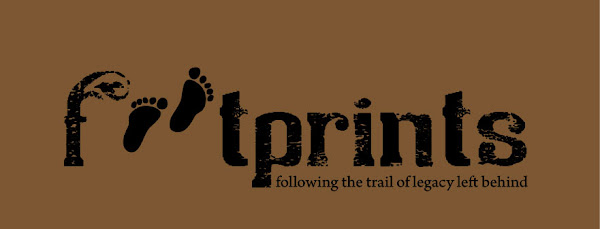City branding is all about reprogramming the behavior of it's city dwellers.
Some Cities that have a good Brand Image are, SF, LA, Philly, NYC, London, Paris, Venice, Amsterdam, Chicago, Miami, Las Vegas. As each of these cities has both interesting physical places, unique historic and cultural dimensions, and a present set of circumstances that continues to build upon and contribute to the overall "brand".
The weaker cities currently in need of a re-brand: Rochester and Berlin – had confusing non-distinctive brands, economic problems, and in some cases, negative history. Their brands were not identifiable and lacked awareness.
When New York Branded Its Way Out of Crisis
The book by Miriam Greenberg, argues that, at the height of New York City’s fiscal crisis (a period known for civil unrest, blackouts, strikes, fiscal insolvency, neighborhood abandonment, graffiti-covered subways and soaring crime) in the 1970s, a coalition of elites came together to brand a new image for their embattled city.
Then, in 1971, the Association for a Better New York began the city’s first, quasi-official tourism marketing campaign, known as “Big Apple.” Though it didn’t go too well, it was a very important precedent.
It was not until 1977, that the New York State Department of Commerce started the “I Love New York” campaign — later made world famous by the graphic emblem designed by Milton Glaser — that tourism marketing really gained steam.
It was an extremely successful campaign and used great local talent. Branding ultimately represented not only an image makeover, but also a more business-friendly restructuring of political and economic relations in the city.
Branding transformed New York’s image from that of a “gritty working-class city” to “one that is business- and tourist-friendly.”
Visit London
Saffron won the job of creating a new corporate identity for Visit London, the marketing arm of Europe’s largest city, in late 2006. The challenge was to find something that let London be historic and charming and also contemporary and evolving—and which avoided the cliches. The identity would support business as well as leisure tourism.
The final logo for Visit London.
The solution was a typographic identity based around a core idea of Visit London as “champions” for London and drawn in red—a colour solidly if not uniquely associated with the city. London’s quirkiness entered in the form of “factoids”, like “It rains more in Rome” and “Est. 50AD”, which are given their own line in the word mark when the situation calls for it.
Here are few sample applications.
![]()


City of Cincinnati
The challenge was to convey to a wide audience the quality of life offered by the city and region. The first step taken was to catalog the area’s key characteristics and determine how people felt about them. Next, was to seek perspectives from a variety of people to help pinpoint the common threads among a diverse demographic. Finally, a visual and verbal identity to center the focus of the initiative was developed.

The span logo was created to evoke the bridges that link the three states and that serve as an active agent for connecting people, cultures and experiences. It is an active connection device for the region’s people, cultures and experiences. The design system is an solution that communicates connection.

City of Hong Kong
Branding the pearl of the Orient
The Brand Hong Kong initiative began as a response to a government recommendation stating, “Hong Kong needs to promote its unique position...A successful external promotion program can have a significant positive impact on Hong Kong’s ability to achieve a number of key economic, social, and cultural objectives.”

The visualization of Brand Hong Kong was executed through a contemporary rendering of the powerful and energetic dragon. This dual expression symbolizes the blend of East and West inherent to Hong Kong in a style suggestive of Chinese calligraphy.


Extreme Makeover: Amsterdam
Amsterdam: major industrial contraction exemplified by the closure of the Ford factory and the ship- yards, a city marred by unemployment and the influx of drugs, civil unrest in its streets embodied by a huge squatting movement – and the branding campaigns were mirrored in their distaste of everyday annoyances. Earlier attempts to label Amsterdam ‘Fashion City’
and ‘Giant City’ had backfired in 1975.
In 1983, a branding campaign was started with the slogan ‘Amsterdam heeft ‘t’ (‘Amsterdam has it’), with a the letter A figuring as a smiling Canal house. ‘Amsterdam heeft ‘t’, in all its cute simplicity, was a seed that contained all the characteristics of present day city branding practices.
The branding campaign had a dual purpose:
- while the official objective is naturally the attraction of tourism and inward investment,
- it serves just as important a purpose in reprogramming the behavior of Amsterdam’s citizens, and neutralizing dissenting visions.

The present city branding campaign, ‘I Amsterdam’, is definitively more subtle and slick. The disciplining mechanism is now called ‘globalization’ or ‘interurban competition’, but in the end it contains much of the same tactics. Amsterdam is competing with other international metropoles – London, Barcelona, Berlin – to lure creatives with culturally interesting surroundings and the quality of its urban habitat.
"The people of Amsterdam are Amsterdam. The diversity of Amsterdam’s business community, the differing backgrounds of its residents and the wide and innovative perspectives of its citizens are the lifeblood of our city. Therefore we, the people of Amsterdam, wish to speak for the city of Amsterdam. Amsterdam is our city, and it’s time for us proudly to voice our dedication and devotion to Amsterdam.”
(extract from the ‘I Amsterdam' manifesto)

I Amsterdam branding campaign, designed by advertising agency Kesselskramer.





1 comments:
This was very useful for my research. Are there any branded cities in India?
Post a Comment